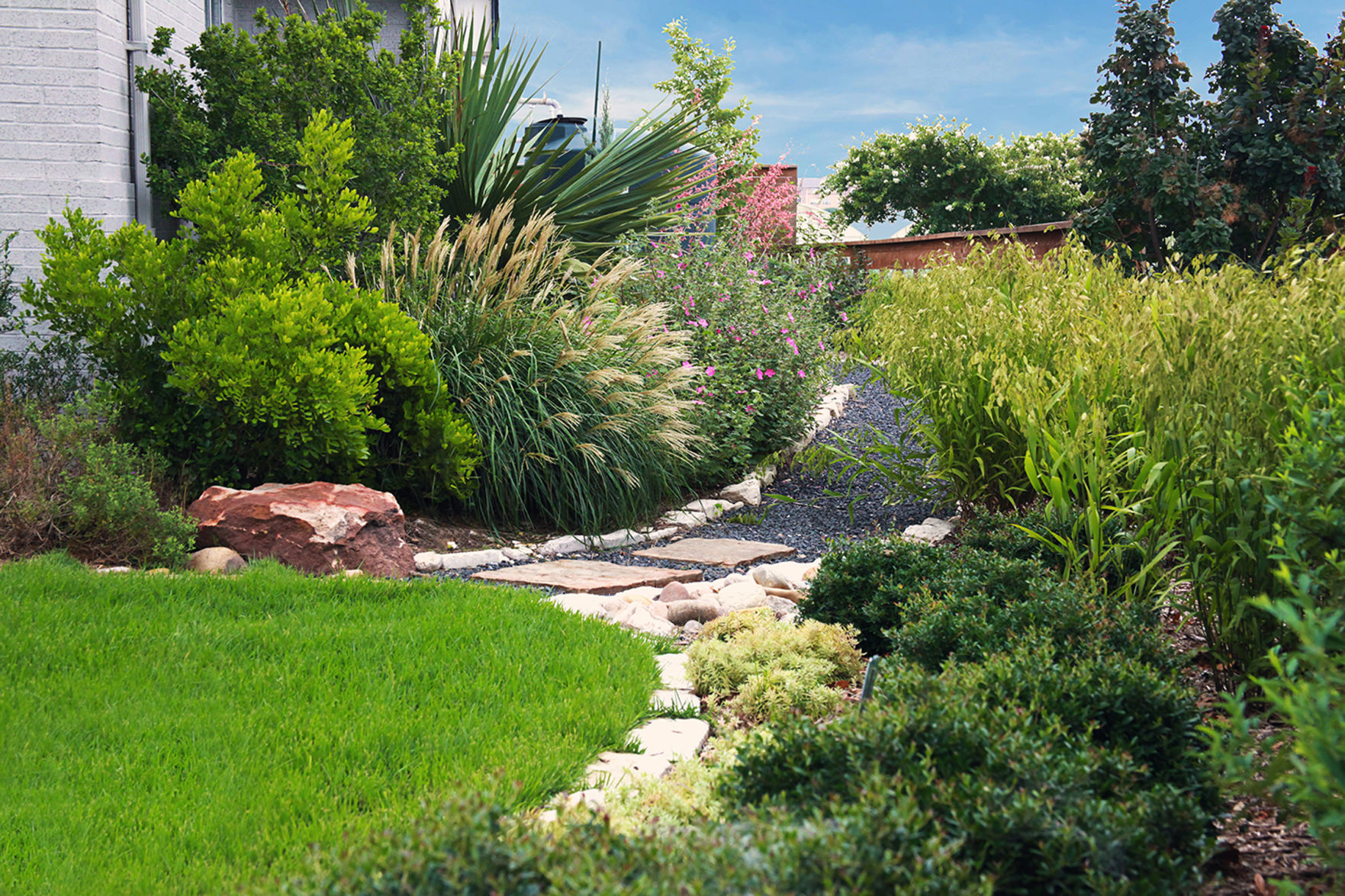Drought is a given and water from traditional sources will be limited in the future, but homeowners and businesses can “find” more water through conservation, according to a Texas A&M AgriLife Research environmental horticulturist.
The 90.3 square miles within the city limits of Amarillo annually gets an average of twice as much water in rainfall as is demanded by residents for both indoor and outdoor use, said Daniel Cunningham, with Texas A&M AgriLife’s urban water program, Water University, in Dallas.
“Can we capture all that water? Certainly not,” he said. “But it’s something to think about. If we are getting twice as much as we need, it does make you wonder how much more you can capture on your property to use as an alternative water source.”
“Water You Doing? West Texas” was the title of Cunningham’s presentation during the fourth biennial Texas Panhandle Water Conservation Symposium recently in Amarillo.
In all the water education programs conducted through the Water University program at the Texas A&M AgriLife Research and Extension Center at Dallas, the goal is to facilitate behavior change, to get people to turn faucets and irrigation controllers off, especially in times of insufficient rainfall, Cunningham said.
“There are certain parts of Texas where we are blessed with good rainfall, but then there are other parts like West Texas and the Panhandle that don’t see as much rainfall,” he said. “It’s not if, but when, we will see a drought. If we can make conservation efforts now and convince our family and friends to do so, maybe we can avoid some of the potential problems.”
Cunningham said as a state, the water supply of 15.2 million acre feet is expected to decline to 13.6 million acre feet at a time when population is expected to increase from 29.5 million to 51 million.
“So it is critical we look at our water availability as a whole; how that relates to the growing urban areas we have; and how that affects water use,” he said. “Where is more water going to come from?”
“It is imperative we look at conservation as a source of more water,” Cunningham said. “One of the best ways to achieve conservation is through education and outreach.”
When thinking conservation, understand that 41 percent of water use in the Dallas/Fort Worth Metroplex is outdoors, he said, adding that percentage is typical for many cities, including Amarillo.
Techniques such as simple rainwater harvesting barrels or cisterns for homeowners; or maybe in a commercial setting, capturing as much water as possible and utilizing technology to filter it to drinking water quality or just to flush the toilets will help, Cunningham said.
“But a cistern only holds so much, so at some point the water is going to overflow,” he said. “We can actually hold more water in a landscape itself than we could ever capture in tanks. Landscapes designed to shunt the water off as quickly as possible don’t make sense. Landscapes that have rain gardens or depressions to slow down the water and allow them to fill up first before they overflow down the storm drains are much better.”
His suggestion is to trap some of the water to allow it to infiltrate, perhaps using curb cuts to catch water coming off a neighbor’s property and encouraging the water to slowly spread into depressions.
Rain gardens engineered with gravel and pipes in the bottom and incorporating compost that acts as a sponge to hold the water is another option, Cunningham said.
“Build landscapes as resilient as possible to drought, and we will be better off when those droughts do come,” he said.
Some landscaping aspects homeowners should include are resources that decrease the need for water from a holistic standpoint: rainwater harvesting or greywater harvesting; native or adapted plants; pervious paving; edible landscaping; rain gardens; drip/efficient irrigation; and reduced lawn area.
He said reducing the amount of turf, which can require a lot of water if managed the wrong way, to about a third of the area still allows for outdoor play. Incorporating water-efficient native or adapted plants and permeable hardscapes on the other two-thirds can increase the amount of water captured and provide it to the plants.
“Our clients are asking for outdoor living spaces that are environmentally sustainable, reduce water costs and are lower in maintenance,” Cunningham said. “This option does that.”
Some other tips he offered include the following:
Create healthy vibrant water-efficient landscapes without sacrificing aesthetics.
Water only when needed.
Water deeply to promote deep and healthy roots. Frequent watering does not encourage deep root growth.
Water slowly for better absorption. Use drip wherever possible and the “cycle and soak” method.
Maintain 2 to 4 inches of mulch in flower, groundcover, garden and shrub areas to hold the water for a longer period of time.
Design for efficiency.
Install irrigation systems for efficient use per state and local specifications.
Water without creating runoff “the concrete is growing fast enough already, it doesn’t need to be watered.”
Check irrigation systems monthly and make repairs and adjustments when needed.
Cunningham said for more landscaping conservation information and ideas, go to https://Wateruniversity.tamu.edu.
